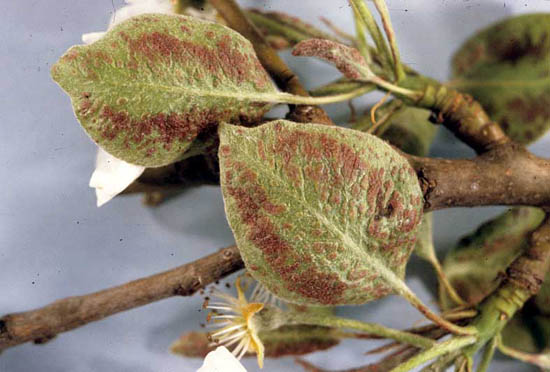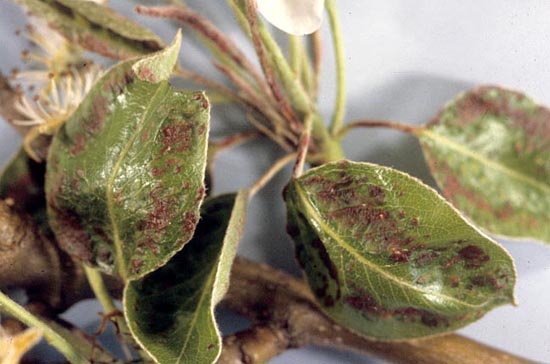Issue 7, June 5, 2009
Pearleaf Blister Mite
Extensive damage from pearleaf blister mites, Phytoptus pyri, has been reported on ornamental pears. This is an eriophyid mite that attacks not only apple and pear fruit and ornamental trees, but also other rose family trees including serviceberry, cotoneaster, hawthorn, and mountain ash.
Eggs overwinter under bud scales, hatching in the early spring. The young mites crawl to the leaves to feed. Being eriophyid mites, they are elongate, cigar-shaped mites with only two pairs of legs at the anterior end. They are much smaller than spidermites, being too small to be seen without a hand lens. They suck juices out of cells on the leaf underside, causing them to rupture. The mites then crawl inside the ruptured cells to lay their eggs. Successive generations cause pinhead-sized pimples to form on the leaf underside that coalesce to form gall-like swellings. These appear as reddish to brownish streaks extending at angles from the midvein. Although the damage is most evident on the leaf underside, similar, lesser damage also appears on the upper leaf surface. Heavily damaged leaves curl and drop from the plant.


Unlike spidermites, eriophyid mites thrive under cool, damp conditions. This spring's weather may be the reason that more pearleaf blister mite damage is being seen. Various miticides may be effective in controlling these mites, but abamectin (Avid) is more effective than some other miticides against eriophyid mites. It is also translaminar; it moves systemically into the leaf tissue which should make it more effective than others against these mites.--Phil Nixon
Author:
Phil Nixon